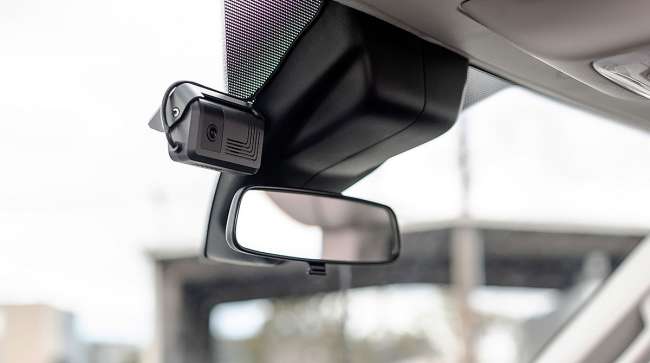Senior Reporter
Inward-Facing Cameras Rate Low With Drivers

[Stay on top of transportation news: Get TTNews in your inbox.]
With an overall approval rating of only 2.2 on a 10-point scale, it’s clear that truck drivers overall do not hold driver-facing cameras in high regard, primarily due to privacy and other issues, according to a new study by the American Transportation Research Institute.
“Given the relatively recent emergence of driver-facing cameras, the resulting low adoption rates, and the wide variety of camera technologies and policies in use, truck drivers’ limited experience with driver-facing cameras certainly plays a role in this low approval rating,” the ATRI study concluded.
However, the study also found that legal and insurance experts generally have a more positive view of cameras capturing driver events in the cab.
“According to surveys of legal and insurance experts, driver-facing camera footage, when available, exonerates drivers in 52% of insurance claims and 49% of litigation cases, as well as leading to settlements in 86% of cases versus proceeding to trial,” according to the 60-page ATRI study, “Issues and Opportunities with Driver-Facing Cameras,” made public on April 14.
FOR IMMEDIATE RELEASE FROM #ATRI - New ATRI Research Identifies Strategies for Improving Driver-Facing Camera Approval and Utilization#TruckingResearch #DriverFacingCameras #InCabCameras #SafetyTechnology #Trucking #TruckingIndustry #RoadFacingCamerahttps://t.co/eweHZde5ol — ATRI (@Truck_Research) April 12, 2023
The study said that driver-facing cameras generally use the same video and storage components as road-facing cameras but are turned inward to view the inside of the cab, “with an emphasis on capturing truck driver activities and behaviors that might create safety risks, as well as to corroborate that risky behaviors are not occurring — thus exonerating the driver when safety critical events or crashes occur.”
To illustrate the concerns of some drivers, ATRI quoted one truckload driver surveyed who pointed out the potential double-edged sword of a driver-facing camera: “Example, someone runs a red light and hits your truck. The road-facing camera proves you had a green light, but the driver-facing camera shows you were taking a drink at the moment of the crash. All the driver-facing camera does is provide ammo to lawyers or your own company to find you at fault.”
One less-than-truckload driver expressed privacy concerns: “With a driver-facing camera you get the feeling that you are being watched 100% of the time. I know that is not the case, but it’s the perception. The company has to find a way to assure the driver that they are not looking to punish the driver for every little thing that they may do wrong.”
But even with lingering concerns about the use of driver-facing cameras, drivers currently using road-facing cameras gave them a high overall approval rating of 8.19 on a 10-point scale — favorable support that was 266% higher than driver-facing cameras, according to the study.

Drivers using road-facing cameras gave them a high overall approval rating of 8.19 on a 10-point scale. (Stoneridge)
Driver suggestions for improving inward-facing camera acceptance ranged from only showing video footage after a crash and turning the camera off when the truck was not moving, to offering pay increases and ending punitive use.
In the survey, some drivers indicated that a carrier can also prioritize positive feedback by emphasizing driver improvement after an improper driving behavior.
“Another way is to provide positive feedback outright when a driver has not had any safety-critical events, such as sudden braking, during a predetermined period of time,” the study said. “Positive feedback can be the basis for a more direct form of safety bonus or reward, or it can be treated as a badge of honor. Like the number of accident-free miles, the number of safety-critical events successfully avoided is a measure of driver excellence.”
The study noted that when executed successfully, driver coaching based on driver-facing camera footage can play two beneficial roles: It improves driver safety and demonstrates carrier commitment to safety during litigation; or disproves the claim that carriers were negligent in their duty to adequately supervise drivers.
“Legal expert respondents pointed out that, in both of these roles, poor coaching can be worse than no coaching at all because coaching creates an additional form of evidence,” ATRI said. “Carriers that repeatedly coach drivers on bad behaviors which still manifest and later contribute to, or exacerbate, an incident may find that juries view this as an indication of a negligent or ineffective safety program.”
Want more news? Listen to today's daily briefing below or go here for more info:




